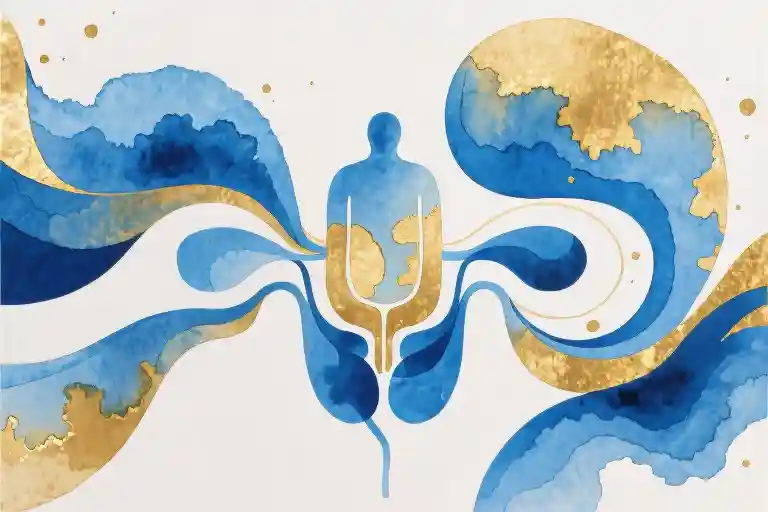The question of whether daily ejaculation is harmful comes up more often than you’d think. For generations, myths about ‘sperm conservation’ and ‘vital energy loss’ have created unnecessary anxiety around this natural bodily function. Modern medical research tells a different story – releasing sperm daily is generally safe for most men, and may even offer some unexpected health benefits.
What gets lost in cultural whispers and locker room talk is the body’s remarkable ability to maintain balance. Your reproductive system isn’t a finite reservoir that empties out, but rather an ongoing biological process that constantly replenishes itself. While frequent ejaculation might cause temporary changes in semen volume and sperm concentration, these fluctuations are part of the body’s normal adaptive response.
The science becomes particularly interesting when we examine potential upsides. Regular ejaculation appears to play a role in prostate health, possibly reducing the risk of certain conditions. Many men report noticeable improvements in sleep quality and stress levels after ejaculation, thanks to the release of endorphins and other neurochemicals. These benefits exist alongside the more obvious pleasure and satisfaction aspects.
Of course, individual experiences vary significantly. Factors like age, overall health, and genetic predisposition all influence how your body responds to frequent ejaculation. Some men might notice temporary changes in semen consistency or volume, while others observe no difference at all. The key lies in understanding your own body’s signals rather than adhering to rigid rules.
In the following sections, we’ll break down the physiological realities behind daily sperm release – from short-term semen changes to long-term health implications. We’ll examine what current research says about fertility concerns, explore the prostate connection, and provide practical guidance for tuning into your body’s unique needs. Whether you’re casually curious or actively managing specific health considerations, separating fact from fiction can lead to more informed and comfortable decisions about your sexual wellbeing.
The Short-Term Physical Effects of Daily Ejaculation
The human body operates like a remarkably efficient factory when it comes to sperm production. Releasing sperm daily triggers temporary adjustments in this biological system, changes that often get misunderstood or exaggerated in popular conversation.
Semen volume and sperm count show the most immediate response to frequent ejaculation. Think of it like a warehouse inventory system – with daily release, the stock doesn’t completely replenish between shipments. Studies indicate semen volume may decrease by about 30-40% when ejaculation occurs daily versus every 2-3 days. The body isn’t running out of sperm; it’s simply operating on a just-in-time production schedule rather than maintaining large reserves.
What surprises many men is how quickly sperm parameters bounce back. Research from fertility clinics shows that sperm motility (their swimming ability) and morphology (shape) typically return to baseline levels within 48 hours after frequent ejaculation stops. The testicles contain multiple stages of developing sperm at any given time, allowing for continuous production. It’s not like emptying a gas tank where you have to wait for a complete refill – more like a conveyor belt that keeps moving while adjusting its speed.
The temporary dip in sperm count with daily release stems from the sperm production cycle itself. From start to finish, creating mature sperm takes approximately 64-72 days in humans. However, the body maintains overlapping production cycles, which explains why complete depletion doesn’t occur even with frequent ejaculation. Picture multiple assembly lines operating at different stages – while one batch ships out, others are in various phases of completion.
Two physiological mechanisms help maintain equilibrium during periods of frequent ejaculation. First, the epididymis (the sperm storage area) can release sperm slightly earlier in their maturation process when needed. Second, the testicles may increase production rates slightly in response to frequent emptying, though this compensation takes several weeks to become significant.
These adjustments explain why men practicing daily ejaculation shouldn’t panic about “running out” – the reproductive system evolved to handle variable demand. The temporary changes represent normal biological adaptation, not dysfunction. However, men trying to conceive might want to space out ejaculations during their partner’s fertile window, as the slight dip in sperm count could marginally reduce pregnancy odds during that specific time.
The Surprising Long-Term Health Benefits You Might Not Know About
While much of the discussion around daily ejaculation focuses on temporary changes in sperm parameters, the long-term health benefits often get overlooked. Emerging research suggests that regular sexual release may contribute to overall wellbeing in ways that extend far beyond momentary pleasure.
Prostate Health: More Than Just Prevention
The prostate gland seems to particularly benefit from regular activity. Multiple studies have observed an association between frequent ejaculation and reduced risk of prostate issues. A Harvard study tracking nearly 32,000 men over 18 years found those ejaculating 21+ times monthly had about 33% lower prostate cancer risk compared to those with 4-7 monthly releases. While the exact mechanism isn’t fully understood, researchers speculate that regular emptying may help flush out potential carcinogens or reduce inflammation.
This doesn’t mean ejaculation frequency alone determines prostate health – diet, genetics and lifestyle matter tremendously. But it does suggest that making room for regular sexual release could be one piece of the prostate health puzzle, especially as men age. Urologists often compare it to other glandular systems – just as regular saliva flow maintains oral health, regular seminal fluid movement may support prostate function.
The Stress-Relief Mechanism You Already Own
Modern life serves up constant stressors, but the body comes equipped with its own relief valve. Ejaculation triggers the release of a cocktail of neurochemicals including endorphins (natural painkillers), oxytocin (the bonding hormone), and serotonin (a mood regulator). This combination creates what researchers call the “post-orgasmic glow” – that relaxed, slightly drowsy state many experience afterward.
For Mark, a 29-year-old software developer, this became an unexpected stress management tool. “When deadline pressure mounts, I used to grind my teeth all night,” he shares. “Now I’ve learned that taking 20 minutes for myself in the evening helps reset my nervous system. It’s not about the act itself so much as the biochemical reset afterward – I sleep better and wake up more focused.”
Sleep Quality: Nature’s Sedative
That post-release drowsiness isn’t just psychological. The same neurochemical changes that promote relaxation also facilitate sleep onset. The prolactin released after orgasm may enhance sleep quality, while the drop in cortisol (the stress hormone) creates conditions for deeper rest. Some small studies have shown men fall asleep faster after ejaculation, though the effect seems most pronounced in those with higher baseline stress levels.
It’s worth noting that individual responses vary – some people feel energized rather than sleepy. The key is tuning into your own body’s rhythms rather than expecting universal results. As with any sleep aid, moderation matters; relying solely on sexual release for sleep could indicate underlying issues worth discussing with a doctor.
The Bigger Picture of Sexual Health
These benefits highlight how sexual health intertwines with overall wellbeing. Rather than viewing ejaculation frequency through a narrow lens of sperm counts or moral judgments, the emerging science suggests we might consider it as part of holistic self-care – like exercise, nutrition and stress management. The prostate benefits remind us that reproductive organs need regular maintenance just like other systems. The mood and sleep improvements demonstrate how sexual health connects to mental health.
That said, these potential benefits don’t imply that more is always better. As we’ll explore later, listening to your body’s signals matters more than hitting any arbitrary frequency target. The research simply suggests that when enjoyed as part of a balanced lifestyle, regular sexual release may offer some unexpected health dividends.
Fertility and Conception Strategies
The relationship between daily ejaculation and male fertility often gets clouded by misinformation. While frequent release may temporarily reduce sperm count in individual samples, it doesn’t equate to diminished fertility potential. The human body operates an efficient sperm production line that constantly replenishes reserves.
Sperm regeneration follows a biological rhythm. Healthy testes produce approximately 1,500 sperm every second – about 90 million per day. This continuous production means that even with daily ejaculation, the reproductive system maintains functional capacity. Research from the American Society for Reproductive Medicine indicates that men with normal sperm parameters show no significant long-term fertility changes from frequent ejaculation.
For couples trying to conceive, timing and sperm quality matter more than absolute numbers. A study published in Fertility and Sterility found that while daily ejaculation decreases semen volume by 30-40%, the remaining sperm often demonstrate better motility. These ‘fresher’ sperm may have improved DNA integrity compared to older sperm that accumulate during abstinence.
Optimal frequency for conception depends on individual circumstances:
- For men with normal sperm counts (over 15 million/mL): Regular intercourse every 1-2 days maintains sperm quality without significant depletion
- For those with borderline low counts (10-15 million/mL): Alternating days may help balance quantity and quality
- In cases of clinically low counts (under 10 million/mL): A fertility specialist can provide personalized recommendations
The ‘abstinence before ovulation’ approach some couples try often backfires. While 3-5 days of abstinence increases semen volume, the accumulated older sperm may have reduced motility and more DNA fragmentation. Reproductive endocrinologists typically recommend maintaining regular sexual activity throughout the cycle, with possible increased frequency during the fertile window.
Modern fertility assessments go beyond simple sperm counts. Clinics now evaluate:
- Sperm morphology (shape)
- DNA fragmentation index
- Motility patterns
- Vitality percentages
These parameters often show better results with regular ejaculation than with prolonged abstinence. The key takeaway? Fertility isn’t a finite resource that gets ‘used up’ through frequent sexual activity. The body’s remarkable regenerative capacity ensures continuous production of reproductive cells.
For those actively trying to conceive, tracking ovulation and maintaining consistent intimacy (rather than ‘saving up’ sperm) typically yields better results. Apps or ovulation predictor kits can help identify the fertile window, but don’t neglect the emotional connection – stress reduction from regular sexual activity may indirectly support conception efforts.
Remember that fertility involves both partners. While this section focuses on male factors, conception challenges often require evaluating the complete reproductive picture. If concerns persist after 6-12 months of timed intercourse, consulting a reproductive specialist can identify any underlying issues and create a targeted plan.
Your Body Knows Best: Understanding Individual Differences
The impact of daily ejaculation varies more than you might expect. While medical research provides general guidelines, your unique physiology ultimately determines what’s healthy for you. This variation explains why some men report feeling energized after daily release while others experience temporary fatigue.
Age plays a significant role in how your body responds. Teenagers and men in their early twenties typically have faster sperm regeneration rates due to higher testosterone levels. A 25-year-old might replenish sperm reserves within 24 hours, while a 50-year-old may require 48-72 hours for complete recovery. This doesn’t mean older men shouldn’t ejaculate daily – it simply means their bodies operate on different biological timetables.
Physical constitution creates another layer of variation. Men with robust overall health often show greater resilience to frequent ejaculation. Factors like nutrition, sleep quality, and stress levels all influence your personal capacity. Someone maintaining excellent cardiovascular health through regular exercise might notice fewer fluctuations in semen volume compared to a sedentary individual.
Recognizing warning signs requires tuning into subtle bodily signals. Some discomfort patterns warrant attention:
- Testicular pain lasting more than a few hours after ejaculation
- Noticeable decreases in urinary flow or changes in urine color
- Unusual fatigue persisting beyond normal recovery periods
- Erectile changes unrelated to psychological factors
- Blood in semen (hematospermia), though occasionally benign
These symptoms don’t necessarily mean daily ejaculation is harmful for you, but they do suggest consulting a urologist might be wise. The body often communicates limits through such signals before serious issues develop.
Hydration status significantly affects individual experiences. Men who don’t drink enough water may notice thicker semen consistency and slightly reduced volume with frequent release. Simple adjustments like increasing water intake by 1-2 glasses daily can often normalize these effects.
Psychological factors intertwine with physical responses. Guilt or anxiety about masturbation frequency can manifest as physical discomfort, creating a misleading cause-effect perception. Separating cultural conditioning from genuine physiological limits requires honest self-observation.
Practical self-assessment methods help determine your ideal rhythm:
- Track energy levels 2-3 hours after ejaculation for several weeks
- Note any genital soreness or urinary changes
- Observe sleep quality patterns on days with/without release
- Monitor workout recovery times at different frequencies
Keeping a simple journal with these metrics often reveals personal patterns more accurately than generalized advice. What emerges is usually a range rather than a fixed number – perhaps your body thrives with release every other day but shows mild stress signals at daily intervals.
Cultural background influences perception of these bodily signals. Men from traditions associating semen with vital energy might interpret normal post-ejaculatory relaxation as ‘energy loss,’ while others view it as healthy stress relief. Recognizing these interpretive frameworks helps separate physiological reality from cultural conditioning.
Medical conditions create important exceptions. Men with chronic prostatitis often benefit from regular ejaculation, while those with certain hormonal imbalances might need moderation. Existing fertility challenges also change the equation – men with already low sperm counts might space releases differently when trying to conceive.
The key lies in developing body literacy. Like learning to distinguish muscle soreness from injury pain during exercise, recognizing your reproductive system’s feedback allows personalized adjustments. Most men find their natural rhythm falls somewhere between daily and weekly release, with fluctuations during stressful periods or lifestyle changes.
When in doubt, a simple reset protocol helps: abstain for 4-5 days while monitoring changes in energy, mood, and physical sensations. The contrast often clarifies what frequency works best for your unique biology. Remember that these needs evolve throughout life – what felt right at 20 may differ at 40, and that’s perfectly normal.
Debunking Myths: From “Seminal Vitality” to Modern Medicine
The notion that semen contains some form of essential life force dates back centuries, with various cultures developing elaborate theories about its supposed magical properties. Ancient Greek physicians believed it carried ‘pneuma’ – the vital breath of life. Chinese medicine traditions spoke of ‘jing’ as a finite essence to be conserved. These historical perspectives created enduring myths that still echo in modern conversations about male sexual health.
What modern laboratory research reveals tells a different story. Semen production operates more like a renewable resource than a precious elixir. The average healthy male produces about 1,500 sperm every second – a biological reality that contradicts the idea of limited reserves. Studies monitoring athletes’ sperm parameters before and after major competitions found no performance difference between those who abstained and those who maintained regular sexual activity.
Contemporary research has systematically dismantled several persistent myths:
- The Exhaustion Fallacy: Comprehensive fertility studies show no evidence that frequent ejaculation leads to long-term depletion. Sperm regeneration continues throughout adult life, with the testicles constantly producing new cells through spermatogenesis.
- The Vitality Myth: Biochemical analysis reveals semen contains ordinary proteins, minerals, and sugars – valuable for reproduction but not containing any unique ‘life force’ absent from other bodily fluids.
- The Performance Anxiety: Controlled studies of athletes demonstrate no correlation between ejaculation frequency and physical endurance, contradicting old warnings about ‘sapping strength’.
Perhaps most telling are the cultural shifts in medical understanding. Where Victorian-era medical texts warned against the ‘dangers’ of masturbation, current urology guidelines recognize regular ejaculation as part of normal sexual health. The prostate health benefits observed in modern studies present an ironic twist – what was once feared as depletion may actually provide protective effects.
This isn’t to say the body has unlimited resources. Like any physiological process, semen production requires proper nutrition and overall health. But the evidence clearly shows that concerns about ‘wasting’ semen or depleting some vital essence belong to the realm of historical curiosity rather than medical science. The real health considerations around ejaculation frequency involve personal comfort, reproductive goals, and individual physiology – factors far more nuanced than ancient warnings about losing one’s vital spirit.
Wrapping It Up: Listening to Your Body
The conversation around daily ejaculation often gets tangled in myths and extremes. What emerges clearly from medical research is this: releasing sperm daily sits comfortably within the spectrum of normal sexual health for most men. The body’s reproductive system operates like a finely tuned ecosystem—it adapts.
Key Takeaways
- Safety First: No credible evidence suggests harm from daily ejaculation for healthy individuals. Temporary dips in semen volume or sperm concentration aren’t cause for alarm; your ‘sperm factory’ recalibrates naturally.
- Benefits Beyond Expectation: From potential prostate protection to those post-ejaculation endorphins that melt stress, the perks extend beyond the bedroom. Improved sleep? Consider it a bonus.
- Fertility Isn’t a Light Switch: Planning for pregnancy doesn’t require hoarding sperm. In fact, fresher sperm from regular ejaculation often show better motility when it counts.
Your Personal Compass
Bodies don’t follow manuals. A 20-year-old athlete’s recovery speed differs from a 50-year-old’s. Watch for:
- Energy shifts: Feeling drained after frequent release? Scale back.
- Physical cues: Discomfort or pain warrants a doctor’s visit—not Dr. Google.
- Emotional check-ins: If guilt or anxiety tag along, unpack that with a therapist, not pornhub comments.
Next Steps
- Try the 3-Day Test: Track energy, mood, and sleep after adjusting frequency.
- Consult Smartly: Ask doctors specific questions like “Could my frequency affect my prostate health?” rather than vague worries.
- Normalize the Talk: Share articles (like this one) to chip away at stigma. Sexual health isn’t a solo sport.
The bottom line? Your body whispers before it screams. Tune in.





